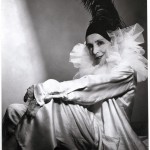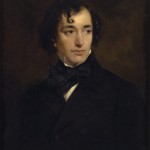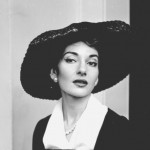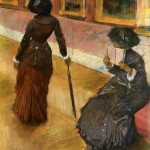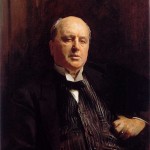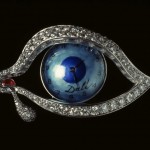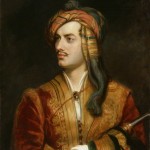Is there any writer who has written of a designer in more evocative terms than Proust has of Fortuny? In In Search of Lost Time, Madame de Guermantes, the epitome of aristocratic elegance, owns “heaps” of Fortuny gowns. Marcel’s lover Albertine covets them. As the two passages below show, Fortuny’s gowns summon reveries of Venice.
Like the theatrical designs of Sert, Bakst and Benois, who at that moment were re-creating in the Russian Ballet the most cherished periods of art with the aids of works of art impregnated with their spirit and yet original, these Fortuny gowns, faithfully antique but markedly original, brought before the eye like a stage décor, and an even greater evocative power since the décor was left to the imagination, that Venice saturated with oriental splendor where they would have been worn and of which they constituted, even more than a relic in the shrine of St. Mark, evocative as they were of the sunlight and the surrounding turbans, the fragmented, mysterious and complementary colour.
Albertine, Marcel’s lover, not only reserves a place for Fortuny gowns in her wardrobe but in her imagination. When gazing at Albertine wearing a gold and blue Fortuny gown, it seems to Marcel “the tempting phantom of that invisible Venice. It was overrun by Arab ornamentation, like Venice, like the Venetian palaces hidden like sultan’s wives behind a screen of perforated stone, like the bindings in the Ambrosian Library, like the columns from which the oriental birds that symbolized alternately life and death were repeated in the shimmering fabric, of an intense blue which, as my eyes drew nearer, turned into a malleable gold by those same mutations which, before an advancing gondola, change into gleaming metal the azure of the Grand Canal. And the sleeves were lined with a cherry pink which is so peculiarly Venetian that it is called Tiepolo pink.





